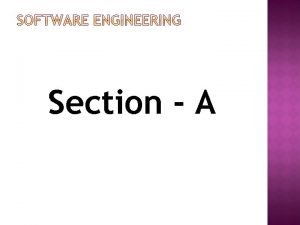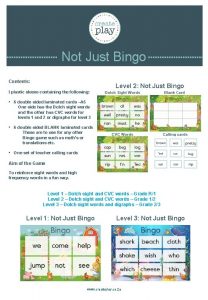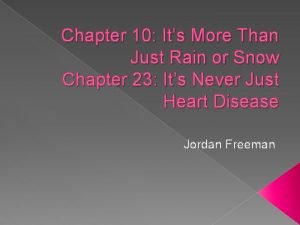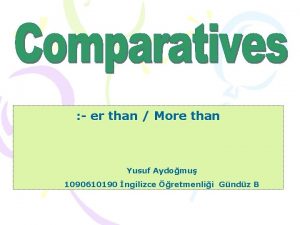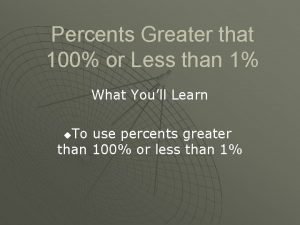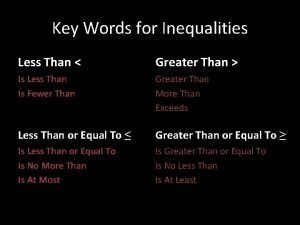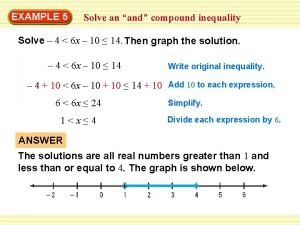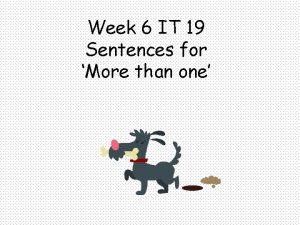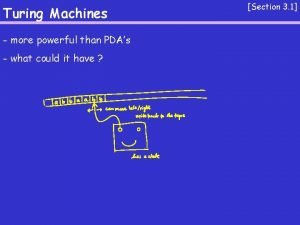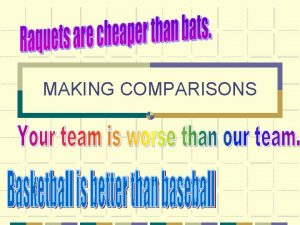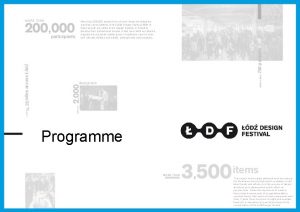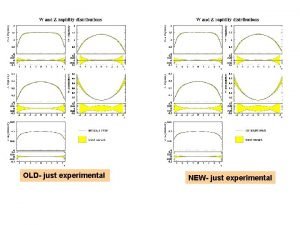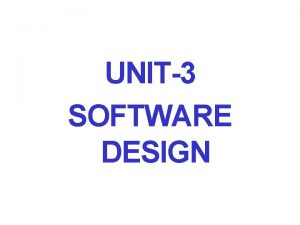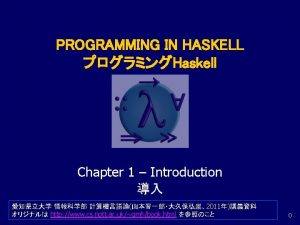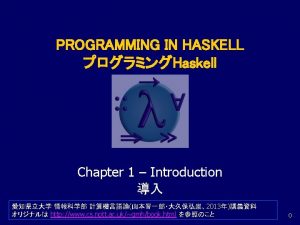Section A Software is more than just a
























- Slides: 24

Section - A

Software is more than just a program code. A program is an executable code, which serves some computational purpose. Software is considered to be collection of executable programming code, associated libraries and documentations. Software, when made for a specific requirement is called software product. Engineering on the other hand, is all about developing products, using well defined, scientific principles and methods. Software engineering is an engineering branch associated with development of software product using well-defined scientific principles, methods and procedures. The outcome of software engineering is an efficient and reliable software product.

The process of developing a software product using software engineering principles and methods is referred to as Software Evolution. This includes the initial development of software and its maintenance and updates, till desired software product is developed, which satisfies the expected requirements. Evolution starts from the requirement gathering process. After which developers create a prototype of the intended software and show it to the users to get their feedback at the early stage of the software product development. The users suggest changes, on which several consecutive updates and maintenance keep on changing too. This process changes to the original software, till the desired software is accomplished. Even after the user has the desired software in hand, the advancing technology and the changing requirements force the software product to change accordingly.

Need of Software Engineering: - The need of software engineering arises because of higher rate of change in user requirements and environment on which the software is working. Following are some of the needs stated: 1. Large software - It is easier to build a wall than a house or building, likewise, as the size of the software becomes large, engineering has to step to give it a scientific process. 2. Scalability- If the software process were not based on scientific and engineering concepts, it would be easier to re -create new software than to scale an existing one. 3. Cost- As hardware industry has shown its skills and huge manufacturing has lower down the price of computer and electronic hardware. But, cost of the software remains high if proper process is not adapted.

4. Dynamic Nature- Always growing and adapting nature of the software hugely depends upon the environment in which the user works. If the nature of software is always changing, new enhancements need to be done in the existing one. This is where the software engineering plays a good role. 5. Quality Management- Better process of software development provides better and quality software product.

Characteristics of good software: A software product can be judged by what it offers and how well it can be used. This software must satisfy on the following grounds: 1. Operational 2. Transitional 3. Maintenance Well-engineered and crafted software is expected to have the following characteristics: 1. Operational : - This tells us how well the software works in operations. It can be measured on: a) Budget b) Usability

c) d) e) f) g) h) Efficiency Correctness Functionality Dependability Security Safety 2. Transitional : - This aspect is important when the software is moved from one platform to another: a) Portability b) Interoperability c) Reusability d) Adaptability

c) Maintenance : -This aspect briefs about how well the software has the capabilities to maintain itself in the ever-changing environment: Modularity B) Maintainability C) Flexibility D) Scalability A)

� � Skills of Software Engineer : - Software engineers create software and systems for computers. They employ techniques of math, science, engineering and design, and often have to test and evaluate their own systems as well as software built by other people. Software engineers usually have a degree in Computer Science. They should have strong analytical and problem solving skills. A software engineer will always want to actively seek to learn new technology, and have outstanding communication and interpersonal skills. 1. Manage Multiple Projects in Deadline-Driven Environments: -It’s likely that as a software engineer, whether you work remotely as a freelancer, or as a full time employee in an office, you’ll encounter the need to manage multiple projects at once, each with their own unique and urgent time line. A successful software engineer will be able to prioritize, triage, and manage all the various milestones of all the various projects on their plate at a given time. Along with managing timelines, a software engineer will need to be able to thrive in an environment where deadlines occur regularly. You’ll have to manage other people’s priorities, and balance them with your own, and the needs of your other clients or projects.

2. Work Well with Teams: -Although writing code is generally a solitary endeavor, a software engineer will be required to communicate regularly with other people and teams. A successful software engineer should be able to communicate responsibly with diplomacy and with grace. You should be able to articulate clearly the needs of a project you’re working on, as well as be able to discuss any challenges or problems that come up. Software engineers will routinely have to work with a number of other teams and departments at once, as well as your own colleagues and other engineers. Software engineers are required to work closely with designers and information architects. You may be required to work with people whose ideas and philosophies you may disagree with, but the work will have to continue nevertheless. Compromises are often made, as software engineers rarely have one hundred percent autonomy over the outcome of a project. A successful engineer will be comfortable with these dynamics, and should be comfortable with meeting in the middle, and sharing responsibilities with people who aren’t necessarily engineers themselves.

3. Understand Software Engineering Best Practices: - There are certain practices and standards in the industry that a successful software engineer will want to master. These include basics, like utilizing version control systems so that you don’t lose old work in case you’d like to revert to an earlier version of your own code; or employing a robust and thorough testing protocol. They also include less basic details like being able to analyze and maintain older code, and developing strategic methodologies upon which you build your coding framework. Writing code, it’s argued by many, is as much an art as a science, and a successful software engineer will learn how to get along in a fast-paced, ever-changing, and competitive industry by knowing the industry’s best practices, and adhering to them as closely as possible.

4. Experience with Multiple Coding Languages: -Many software engineers are fluent in one important language, and this becomes their area of expertise. This works quite well, but it doesn’t mean other languages should be excluded entirely from a successful engineer’s digital vocabulary. An employer won’t necessarily expect you to be fluent in all those important coding languages of the day, but you may be more attractive to an employer if you’re able to learn languages with analogous qualities, or if you know a bit about different types of languages.

Principles of Software Engineering : 1. 2. 3. 4. 5. 6. 7. Rigor and Formality Separation of Concerns Modularity Abstraction Anticipation of Change Generality (? ) Incrementality

Software Development Life Cycle, SDLC for short, is a well-defined, structured sequence of stages in software engineering to develop the intended software product. SDLC Activities SDLC provides a series of steps to be followed to design and develop a software product efficiently. SDLC framework includes the following steps: 1. Communication: -This is the first step where the user initiates the request for a desired software product. He contacts the service provider and tries to negotiate the terms. He submits his request to the service providing organization in writing. 2. Requirement Gathering: - This step onwards the software development team works to carry on the project. The team holds discussions with various stakeholders from problem domain and tries to bring out as much information as possible on their requirements. The requirements are contemplated and segregated into user requirements, system requirements and functional requirements. The requirements are collected using a number of practices as given � studying the existing or obsolete system and software, � conducting interviews of users and developers, � referring to the database or � collecting answers from the questionnaires.

3. Feasibility Study: - After requirement gathering, the team comes up with a rough plan of software process. At this step the team analyzes if a software can be made to fulfill all requirements of the user and if there is any possibility of software being no more useful. It is found out, if the project is financially, practically and technologically feasible for the organization to take up. There are many algorithms available, which help the developers to conclude the feasibility of a software project. 4. System Analysis: -At this step the developers decide a roadmap of their plan and try to bring up the best software model suitable for the project. System analysis includes Understanding of software product limitations, learning system related problems or changes to be done in existing systems beforehand, identifying and addressing the impact of project on organization and personnel etc. The project team analyzes the scope of the project and plans the schedule and resources accordingly.

Software Design: - Next step is to bring down whole knowledge of requirements and analysis on the desk and design the software product. The inputs from users and information gathered in requirement gathering phase are the inputs of this step. The output of this step comes in the form of two designs; logical design and physical design. Engineers produce meta-data and data dictionaries, logical diagrams, data-flow diagrams and in some cases pseudo codes. 6. Coding: - This step is also known as programming phase. The implementation of software design starts in terms of writing program code in the suitable programming language and developing error-free executable programs efficiently. 7. Testing: - An estimate says that 50% of whole software development process should be tested. Errors may ruin the software from critical level to its own removal. Software testing is done while coding by the developers and thorough testing is conducted by testing experts at various levels of code such as module testing, program testing, product testing, in-house testing and testing the product at user’s end. Early discovery of errors and their remedy is the key to reliable software. 5.

8. Integration: - Software may need to be integrated with the libraries, databases and other program(s). This stage of SDLC is involved in the integration of software with outer world entities. 9. Implementation: -This means installing the software on user machines. At times, software needs post-installation configurations at user end. Software is tested for portability and adaptability and integration related issues are solved during implementation. 10. Operation and Maintenance: -This phase confirms the software operation in terms of more efficiency and less errors. If required, the users are trained on, or aided with the documentation on how to operate the software and how to keep the software operational. The software is maintained timely by updating the code according to the changes taking place in user end environment or technology. This phase may face challenges from hidden bugs and real-world unidentified problems.

The software development paradigm helps developer to select a strategy to develop the software. A software development paradigm has its own set of tools, methods and procedures, which are expressed clearly and defines software development life cycle. A few of software development paradigms or process models are defined as follows: 1. Waterfall Model : - Waterfall model is the simplest model of software development paradigm. It says the all the phases of SDLC will function one after another in linear manner. That is, when the first phase is finished then only the second phase will start and so on.


� � This model assumes that everything is carried out and taken place perfectly as planned in the previous stage and there is no need to think about the past issues that may arise in the next phase. This model does not work smoothly if there are some issues left at the previous step. The sequential nature of model does not allow us go back and undo or redo our actions. This model is best suited when developers already have designed and developed similar software in the past and are aware of all its domains.

2. Spiral Model Spiral model is a combination of both, iterative model and one of the SDLC model. It can be seen as if you choose one SDLC model and combine it with cyclic process (iterative model). This model considers risk, which often goes un-noticed by most other models. The model starts with determining objectives and constraints of the software at the start of one iteration. Next phase is of prototyping the software. This includes risk analysis. Then one standard SDLC model is used to build the software. In the fourth phase of the plan of next iteration is prepared.


3. a) b) c) d) e) f) g) Win Spiral Model : It is model of a process based on Theory W, which is a management theory and approach “based on making winners of all of the system’s key stakeholders as a necessary and sufficient condition for project success”. Identifying the system’s stakeholders and their win conditions Reconciling win conditions through negotiation to arrive at a mutually satisfactory set of objectives, constraints and alternatives for the next level. Evaluate product and process alternatives. Define next level of product and process Validate Product and Process definition. Review , commitment

 Lirik lagu more more more we praise you
Lirik lagu more more more we praise you More more more i want more more more more we praise you
More more more i want more more more more we praise you Software is more than just a
Software is more than just a Not just bingo march
Not just bingo march Math is more than just numbers
Math is more than just numbers It's more than just rain or snow
It's more than just rain or snow Thousands of possibilities get yours slogan
Thousands of possibilities get yours slogan More er than
More er than 5730x5
5730x5 Greater than god and more evil
Greater than god and more evil Describe the dream that romeo has just had
Describe the dream that romeo has just had A grosso has a group of soloists rather than just one
A grosso has a group of soloists rather than just one Percents greater than 100 and less than 1
Percents greater than 100 and less than 1 Greater than less than fractions
Greater than less than fractions Keywords for inequalities
Keywords for inequalities Which is correct
Which is correct Your love is deeper than the ocean higher than the heavens
Your love is deeper than the ocean higher than the heavens Dot
Dot Compound inequality examples
Compound inequality examples Sentence about climb
Sentence about climb Curriculum evaluation definition
Curriculum evaluation definition Tm is more powerful than pda
Tm is more powerful than pda Can an atom have more neutrons than protons
Can an atom have more neutrons than protons Jenny's engagement ring is enormous it must be a fortune
Jenny's engagement ring is enormous it must be a fortune How to cite more than one author
How to cite more than one author


